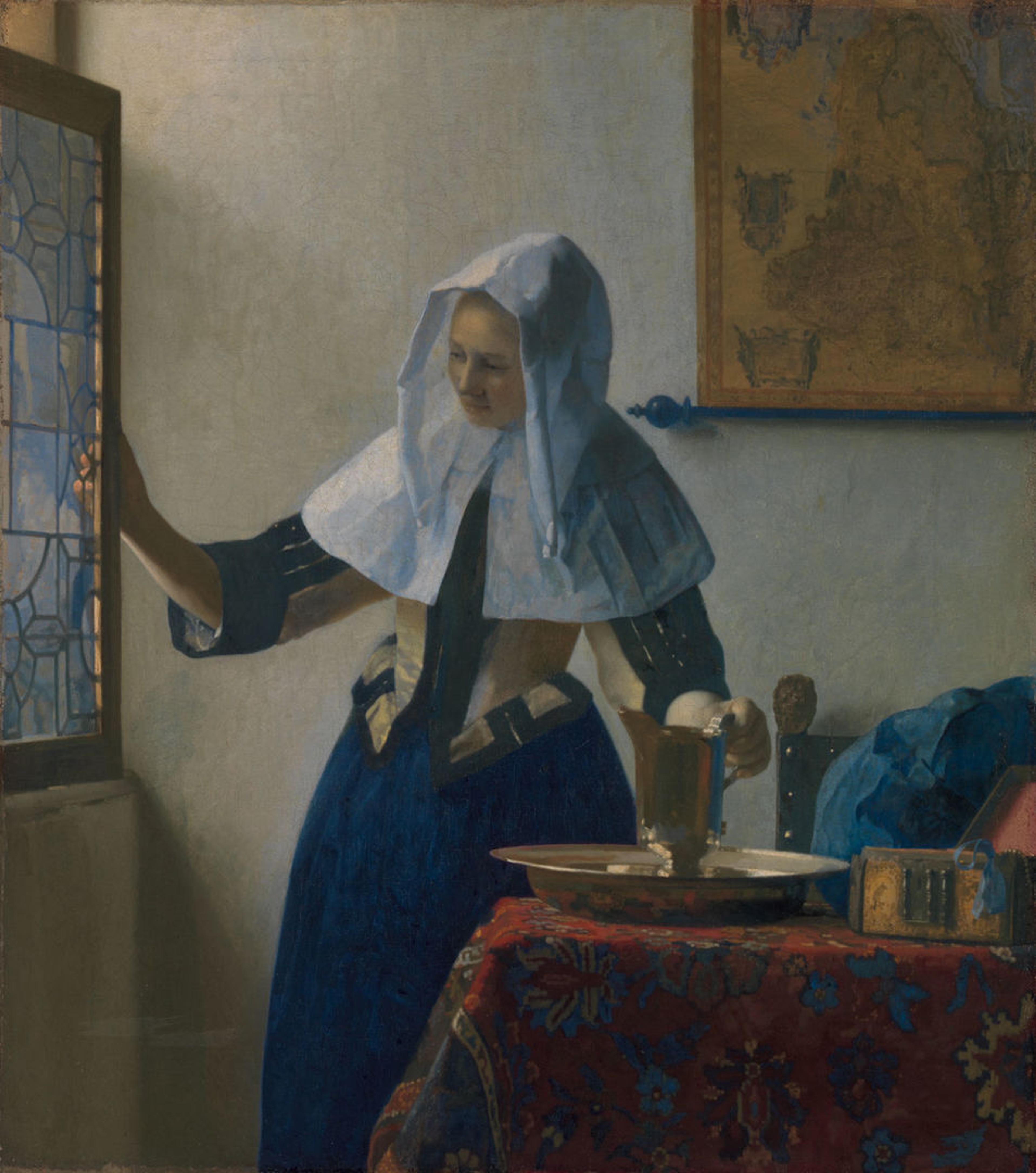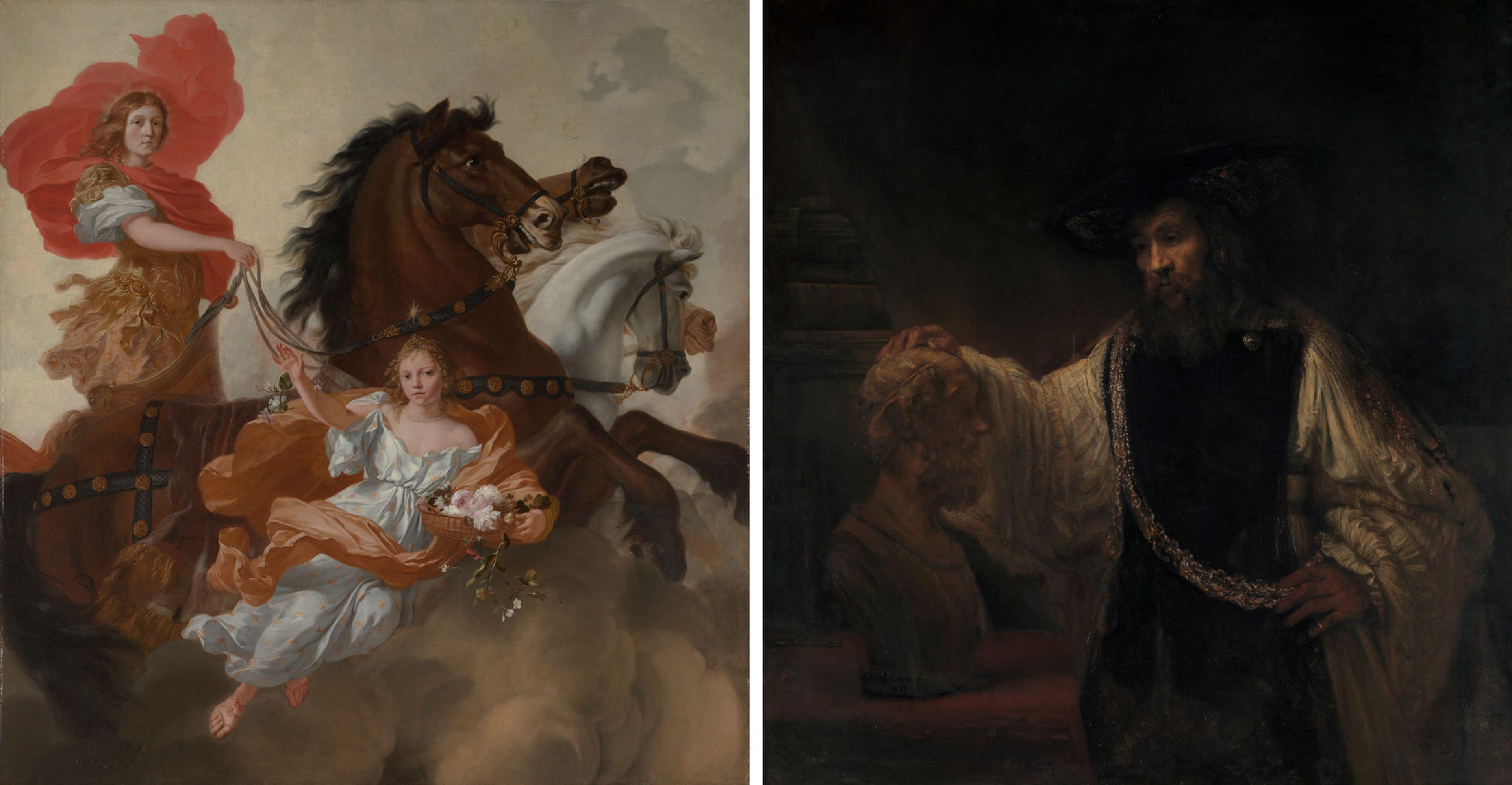In Praise of Painting: Rethinking Art of the Dutch Golden Age at The Met

Johannes Vermeer (Dutch, 1632–1675). Young Woman with a Pitcher, ca. 1662. Oil on canvas, 18 x 16 in. (45.7 x 40.6 cm). The Metropolitan Museum of Art, New York, Marquand Collection, Gift of Henry G. Marquand, 1889 (89.15.21)
There are few things more exciting—or daunting—for a curator than the chance to rethink the display of a beloved area of The Met collection. In the summer of 2017, I received the assignment to build a new exhibition around the Museum's fabled holdings of seventeenth-century Dutch painting. On a pragmatic level, this show arose from the need to find an alternate space in the Museum to display masterworks by artists such as Rembrandt and Vermeer while The Met's European Paintings galleries undergo renovation. But moving this portion of the collection into the lower-level galleries of the Robert Lehman Wing has also given us the chance to experiment with the story we tell about one of the most celebrated chapters in art history.
The Dutch Republic, which gained independence from Spain in 1648 after eighty years of warfare, provided fertile ground for an experimental and competitive art market. We now celebrate this "Golden Age" for the signature realism of Rembrandt, the earthy humor of Frans Hals, and the luminous scenes of everyday life by Vermeer. While visitors to In Praise of Painting: Dutch Masterpieces at the Met will encounter many works by these celebrated artists, there are also plenty of surprises in store for even the most devoted Met regulars.
As the exhibition reveals, seventeenth-century Dutch artists engaged in fierce debates about matters of style. In fact, the exhibition's title comes from an address the artist Philips Angel gave to fellow painters in 1641, in which he singled out painting's ability to imitate nature. Other artists, influenced by French and Italian art theory, thought that painting's higher calling was to imitate the perfection of classical antiquity and promote a sense of decorum.

Left: Gerard de Lairesse (Dutch, 1641–1711). Apollo and Aurora, 1671. Oil on canvas, 80 1/2 x 76 1/8 in. (204.5 x 193.4 cm). The Metropolitan Museum of Art, New York, Gift of Manuel E. and Ellen G. Rionda, 1943 (43.118). Right: Rembrandt (Rembrandt van Rijn) (Dutch, 1606–1669). Aristotle with a Bust of Homer, 1653. Oil on canvas, 56 1/2 x 53 3/4 in. (143.5 x 136.5 cm). The Metropolitan Museum of Art, New York, Purchase, special contributions and funds given or bequeathed by friends of the Museum, 1961 (61.198)
One of the paintings brought out of storage for this exhibition is a monumental depiction of the ancient deities Apollo and Aurora by Gerard de Lairesse—hardly a household name today, but a celebrated artist during his lifetime. Installed over the course of two nerve-wracking days by a dedicated team of technicians, riggers, and machinists, De Lairesse's massive painting now confronts Rembrandt's iconic Aristotle with a Bust of Homer across the light-filled atrium of the Lehman Wing.
Such juxtapositions make visible the debates between idealists and realists that raised the stakes of style for seventeenth-century Dutch art. By placing icons of the Museum alongside fascinating works usually confined to storage, I hope that In Praise of Painting gives visitors an expanded sense of the achievements of seventeenth-century Dutch painting. Please stay tuned for future blog articles related to the exhibition and the broader story it tells about Dutch art.
Related Content
In Praise of Painting: Dutch Masterpieces at The Met is on view through October 4, 2020.
View the artworks featured in the exhibition.
Listen to the Audio Guide for this exhibition, in which experts in diverse fields discuss how these artworks inspire them: a poet muses on still lifes and hidden truths, a cinematographer meditates on stories told with light, and a Dutch florist rearranges the fiction of floral arrangements.
Read essays on the Heilbrunn Timeline of Art History related to the Dutch Golden Age: "Rembrandt (1606–1669): Paintings"; "Johannes Vermeer (1632–1675)"; "Johannes Vermeer (1632–1675) and The Milkmaid"; "Frans Hals (1582/83–1666)"; "Food and Drink in European Painting, 1400–1800."
Adam Eaker
Associate Curator Adam Eaker studied Art History at Yale University and Columbia University, where he received his PhD in 2016. A specialist in Northern European and British painting of the 16th through the 18th century, he was previously a visiting scholar at the Rubenianum Research Institute for Flemish Art in Antwerp. Before joining the staff of The Met, he served as an Anne L. Poulet Curatorial Fellow and subsequently guest curator at the Frick Collection, where he co-curated the exhibition Van Dyck: The Anatomy of Portraiture (2016).